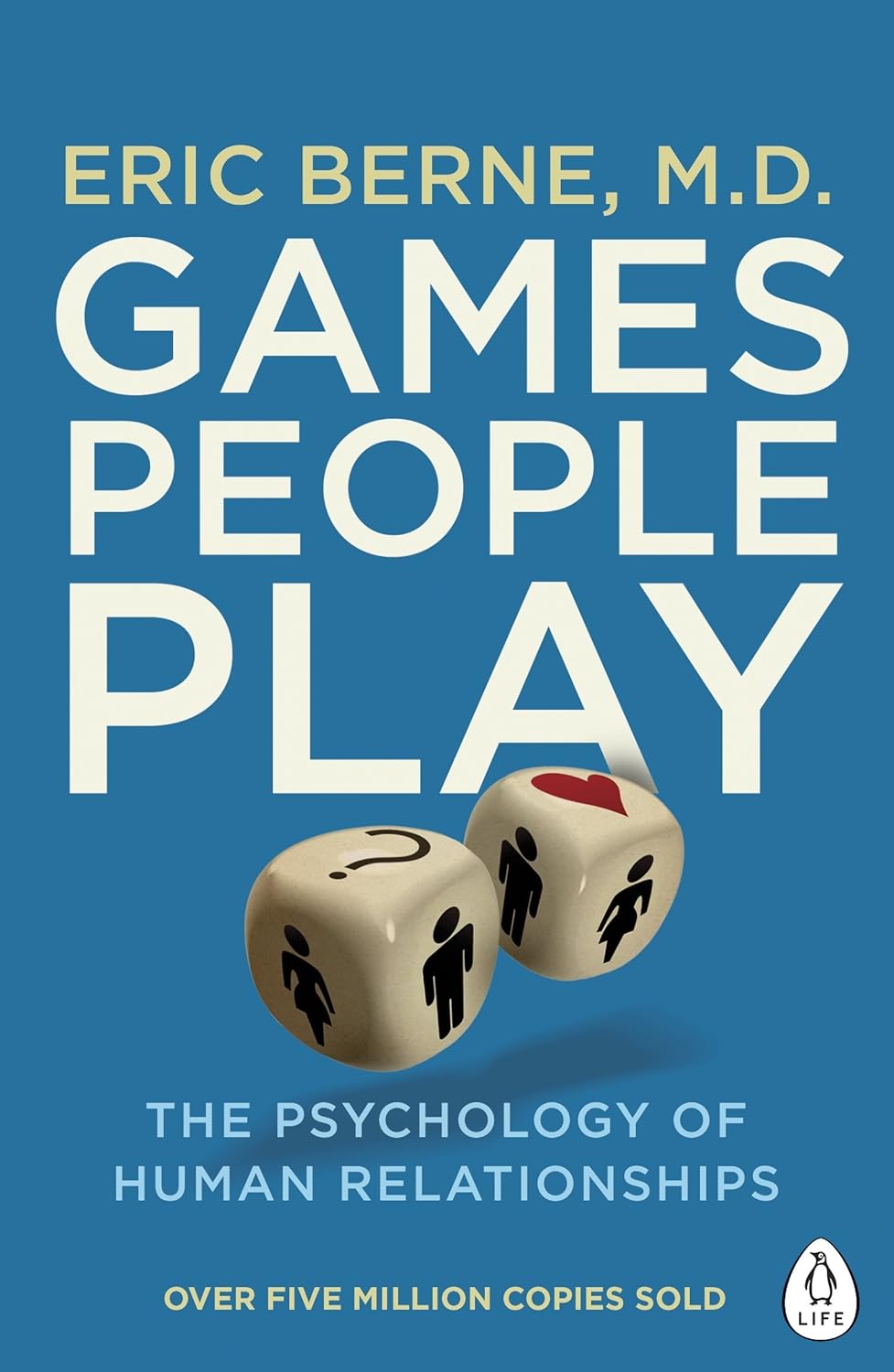Games People Play

It’s a book to describe the patterns that exist in human interactions – it’s the Games People Play: The Psychology of Human Relationships. Described as one of the first “pop psychology” (popular psychology) books, it’s criticized for a lack of research support and for the way that it trivialized psychoanalysis. Despite these criticisms, the book was wildly popular and brought to the cocktail party a language for describing how various people were interacting.
The Parent, the Adult, and the Child
In Berne’s transactional analysis of interactions, he proposes three states that a person can be in while acknowledging multiple levels of interaction. Berne uses the labels parent, adult, and child rather than the more technical labels exteropsychic, neopsychic, and archaeopsychic. Simply, the parent state is concerned with external world judgement and the values, ideas, emotions, and behaviors of others. The adult is concerned with the interpretation and processing of information. The child is characterized by behaviors and attitudes from early childhood.
The parent’s judgement often triggers a child response from others. The child’s response often comes from a place of perceived weakness and the need to defend oneself. This often sets up a series of attacks between the two parties. (See Dialogue – Defensive Routines.) The child’s response includes a judgement (parent) response, which sets the other person into their child state, and the cycle has begun. Some more contemporary work has sought to describe how to avoid these harmful interactions including Marshal Rosenberg’s Nonviolent Communication and John Gottman’s The Science of Trust.
Relationships between the adult and either the child or the parent state are generally less harmful, but there are times when it’s not one level that a transaction is operating at but several levels at the same time. When this happens, it’s possible that the transaction is still somewhat harmful. Consider a harmless social interaction where one person is triggered and feels defensive. The social level of adult-to-adult communication is happening, but at a psychological level, the second person may be feeling from a child perspective. (See The Fearless Organization for more on triggering.)
Intent
With the understanding of states and the capacity to trigger others, we must realize that intent isn’t the only thing that matters. In many of the games that are enumerated, the intentions are positive or neutral. A few of the games covered do have selfish motives as a part of the story – but not malicious. In most cases, the people who are involved in one of the archetypical responses that the game involves are unaware that the game is being played and their role in it.
The Payoff
Each person is in the game, because they get – or hope to get – some sort of payoff. For the alcoholic, it might be the chance to punish themselves for some real or imagined problem. (See Compassion and Self-Hate for more.) There are many other things that the people playing the game are seeking, including a chance to feel good about how they’re helping.
It’s important – in any interaction – to understand what the expected results, the likely results, and the potential worst results are. The expected results are often more positive than the situation calls for.
The Games
I won’t catalog the games here, because I couldn’t do them justice. There are roles, aims, and types that only make sense in their context. However, as Berne acknowledges, there are many different kinds of games beyond the list cataloged 80 years ago. What is stunning about the list, however, is the degree to which people continue to play the same games generation after generation. Ultimately, it may be difficult to eradicate or even fully understand the Games People Play.
